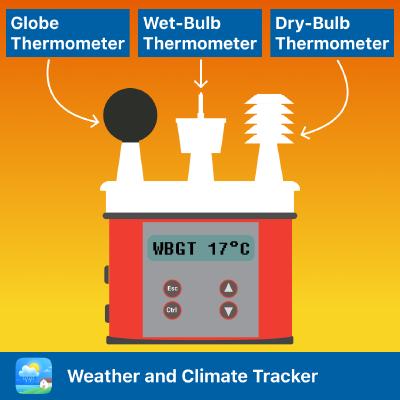


Fog
Fog is the world draped in mystery. It’s like waking up inside a dream, where everything is hazy, distant, and beautifully eerie. With temperatures hovering between 0 to 10°C (32 to 50°F), fog forms when cold air meets warm, creating a dense blanket of tiny water droplets suspended in the atmosphere.
Read more...
What is Mist and What Differs It From Other Weather Conditions?
A day with mist is like stepping into a dreamy painting, where everything is soft-focused, ethereal, and slightly surreal. The world transforms, distances blur, and there’s a gentle touch of mystery in the air. It’s as if nature decided to add a soft filter, turning everyday scenes into works of art.
Read more...
What is Wet Bulb Globe Temperature?
In order keep safe when it’s hot outside, it’s important to know how hot it really feels. Scientists created something called the Wet Bulb Globe Temperature or WBGT to measure the heat stress in the air. Imagine you have three thermometers: a regular one, a wet one, and one inside a shiny black ball.
Read more...
Do You Know What Lenticular Clouds Are?
Lenticular clouds are one of the most beautiful natural phenomena. When you first see them in a photo, it’s hard to believe that this is a real shoot, not a photoshop. Lenticular clouds are quite rare and can be observed mainly in mountainous areas. Most often they are recorded in the United States, Kamchatka, and near Mount Fuji in Japan.
Read more...
What is Mirage?
What is a mirage and where does it come from? Mirage is undoubtedly one of the most mysterious atmospheric phenomena that has always been associated with secrets and legends. But in reality, the mirage is easily explained from a scientific point of view. It appears when the air near a highly heated surface (about 60-70 °C) also heats up and becomes inhomogeneous.
Read more...
10 Windiest Spots in Europe
Europe is home to diverse landscapes, and its windy places offer exciting experiences for wind sports enthusiasts and nature lovers alike. Let’s discover ten of Europe’s windiest places, from the sunny shores of Spain to the rugged shores of Norway.
Read more...
Shoes that Fight Climate Change?
Would you be alright if we start writing about products and services that help us mitigate climate emergency? Of course you would, so here is a shoe brand from Portugal that does exactly this. They collect plastic waste from beaches of the North of Portugal and use fabric made from pineapple leaves instead of leather, so that the resulting shoes are if not 100% sustainable - still telling the story of how we can do better.
Read more...
